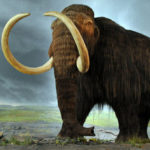 Movies and TV
Movies and TV  Movies and TV
Movies and TV  Creepy
Creepy 10 Lesser-Known Shapeshifter Legends from Around the World
 Animals
Animals 10 Amazing Animal Tales from the Ancient World
 Gaming
Gaming 10 Game Characters Everyone Hated Playing
 Books
Books 10 Famous Writers Who Were Hypocritical
 Humans
Humans 10 of the World’s Toughest Puzzles Solved in Record Time
 Mysteries
Mysteries 10 Scientific Mysteries We Don’t Fully Understand
 Weird Stuff
Weird Stuff 10 Celebrities Who Have Admitted to Alien Encounters
 Our World
Our World 10 Surprising Secrets of Notre Dame Cathedral
 Miscellaneous
Miscellaneous 10 Intriguing Origins of Popular Carnival Rides
 Movies and TV
Movies and TV 10 Actors Dragged out of Retirement for One Key Role
 Creepy
Creepy 10 Lesser-Known Shapeshifter Legends from Around the World
 Animals
Animals 10 Amazing Animal Tales from the Ancient World
Who's Behind Listverse?

Jamie Frater
Head Editor
Jamie founded Listverse due to an insatiable desire to share fascinating, obscure, and bizarre facts. He has been a guest speaker on numerous national radio and television stations and is a five time published author.
More About Us Gaming
Gaming 10 Game Characters Everyone Hated Playing
 Books
Books 10 Famous Writers Who Were Hypocritical
 Humans
Humans 10 of the World’s Toughest Puzzles Solved in Record Time
 Mysteries
Mysteries 10 Scientific Mysteries We Don’t Fully Understand
 Weird Stuff
Weird Stuff 10 Celebrities Who Have Admitted to Alien Encounters
 Our World
Our World 10 Surprising Secrets of Notre Dame Cathedral
 Miscellaneous
Miscellaneous 10 Intriguing Origins of Popular Carnival Rides
10 Extinct Species That Are Still Alive Genetically
Neanderthals have been extinct for millennia, but roughly 1 to 4% of their DNA live on in modern Eurasian populations. This is not a rare case—long-gone species continue to echo in many modern creatures. Thanks to the miracle of evolution and inheritance, the ghosts of the cave bear, auroch, and several mysterious ancestors still walk among us.
https://humanorigins.si.edu/evidence/genetics/ancient-dna-and-neanderthals#:~:text=Neanderthals%20have%20contributed%201%2D4,human%20migrations%20back%20into%20Africa
Related: Top 10 Astounding Uses For Genetic Technology
10 Wild Cannabis / Modern Cannabis
For the longest time, scientists couldn’t find the birthplace of cannabis and speculated it was probably Central Asia. In 2021, a study tackled the mammoth task of tracing the origins of cannabis. What made it so difficult was the fact that humans have selectively bred countless strains for thousands of years, obscuring the lineage that ran back to the original ancestor plant.
The study delivered unexpected findings. After sequencing over 100 cannabis genomes, it showed the plants evolved in China, not Central Asia. The biggest surprise, however, was an unknown lineage of cannabis.
The team expected to see the two known types—the hemp plant grown for its fibers and cannabis cultivated for cannabinoid production. The new lineage was feral cannabis (human-manipulated strains that returned to nature). The feral plants were more closely related to the wild ancestor than any living variety today. The study also concluded that this ancestor species is probably extinct.[1]
9 Ghost Lineage / Sub-Saharan Populations
In 2017, scientists examined human spit. They wanted to learn more about a certain protein that makes saliva slimy. Called mucin-7, it also captures microbes, possibly to prevent harmful organisms from entering the body. However, the study stumbled upon a surprise.
To properly analyze the protein, researchers took samples from over 2,500 modern human genomes. They honed in on the gene for mucin-7, called MUC7, when they discovered that a large number of people from sub-Saharan Africa had a wildly different version of the MUC7 gene. Closer examination revealed that it came from an unknown extinct human species or a “ghost lineage.”
The unusual gene is all that remains of this mysterious human species today, as there are no fossils of them. It’s estimated that the ancestors of modern humans encountered and interbred with this unknown group about 200,000 years ago.[2]
8 The Auroch / Texas Longhorn Cattle
In 2013, the University of Texas published a family report on the Texas Longhorn. Old wisdom stated that these bovines came from a pure European lineage. However, the Longhorn’s heritage turned out to be more global.
Genetic markers from 58 cattle breeds were examined, revealing that 85% of Longhorn DNA was “taurine.” This group descended from aurochs, a now-extinct wild ox. The auroch lived in Europe, but taurine animals were domesticated in the Middle East several millennia ago. The remaining Longhorn DNA was “indicine,” auroch descendants that were domesticated in India before spreading to Africa and the Iberian peninsula.
The Texas Longhorn’s direct ancestors were brought to America by Christopher Columbus. They became feral for centuries and regained a wild look reminiscent of the auroch. Some ranchers came to value the Longhorn’s independence and ability to weather harsh conditions, and they became livestock once more.[3]
7 Cave Bears / Brown Bears
The giant cave bear went extinct roughly 25,000 years ago. In recent times, researchers extracted DNA from cave bear fossils and compared it to brown bears. To their surprise, they found that modern brown bears carry between 0.9 and 2.4% cave bear DNA.
The discovery was unexpected for two reasons. First, cave bears and brown bears are two very different species. For example, cave bears were herbivores, while brown bears are carnivores. Secondly, cave bears were enormous. Males could weigh up to 2,204 pounds (1,000 kg), while male brown bears average about 660 pounds (300 kg). How the two species romanced each other, given their size difference, remains a good question.
It’s not a mystery how this was possible in the first place. Before cave bears vanished, they lived alongside brown bears, and this provided them with the opportunity to pass on their genes. Interestingly, Alaskan brown bears carry the smallest amount of cave bear DNA, while European brown bears have the most.[4]
6 Denisovans / Tibetans
Denisovans were a mysterious human-like species known only from a few bones and their genome. Denisovan DNA lives on in several modern groups including Han Chinese, Tibetans, and Melanesians. But there’s something special about the Denisovan heritage of Tibetans.
Everyone has a gene called EPAS1. Whenever oxygen levels in the blood dip, it triggers the production of extra hemoglobin, which increases the oxygen-carrying capacity of the blood. At low elevations, things run smoothly. The higher a person goes, and the thinner the air gets, the harder EPAS1 has to work—and the results are deadly.
As EPAS1 boosts hemoglobin to cope with increasingly low-oxygen conditions, the blood thickens, leading to hypertension and heart attacks. Such dangers are prevalent above 13,000 feet (3,962 meters), but most Tibetans can venture past this point with no issue. Their EPAS1 gene, inherited from Denisovans, doesn’t go into overdrive at higher altitudes. It only slightly raises hemoglobin, which allows Tibetans to climb higher without the side effects seen in others.[5]
5 Mystery Wolf / Dogs
The origins of dogs have always been a mystery. It’s not as simple as taking a DNA sample and seeing the wolf that turned into a dog. Domestic canines appeared as far back as 33,000 years ago. They kept interbreeding with wolves, which clouded the genetic identity of the first species to evolve into dogs.
To avoid this later jumble of wolf DNA, researchers sequenced the genomes of two dog breeds whose territory hadn’t overlapped with wolves for thousands of years. This was the Australian Dingo and the African Basenji. The study predicted that their genetics would match a wolf species native to either Asia, the Middle East, or Eastern Europe, the three areas thought to be the likeliest sites of dog domestication.
Surprisingly, the tests showed that dogs and modern wolves are sister groups and not ancestors and descendants. In other words, dogs do not come from the same lineage as modern wolves. This pointed to an unknown, extinct wolf species that left no descendants other than dogs.[6]
4 Pinta Giant Tortoise / Hybrid Galápagos Tortoise
The last Pinta giant tortoise died in 2012. During his lifetime, “Lonesome George” was famous for being the last of his species. When he passed away in captivity, he was well over 100 years old.
The Pinta giant tortoise was one of up to 15 tortoise species that once roamed the Galápagos Islands. In 2020, researchers visited one of the islands, Isabela Island, and found a female tortoise. Tests revealed that she was a hybrid carrying Pinta giant tortoise genes. But this was just the start. The team also found 29 tortoises with partial Floreana giant tortoise ancestry, an extinct species from Floreana Island, another location in the Galápagos chain.
All the hybrids were removed to a breeding center. The Floreana group offers hope that this species might be revived (to some extent). To ensure the preservation of Lonesome George’s lineage, scientists are now actively hunting for more Pinta hybrids on the islands.[7]
3 Red Wolf / Galveston Island Dogs
Red wolves were once common throughout the southeastern United States. However, hunting and habitat loss destroyed the species. By the time conservation efforts started in the 1970s, it was too late—at least for the wild population. While a few dozen animals were kept in breeding programs, the red wolf was declared extinct in the wild in 1980.
On Galveston Island, Texas, coyote-like dogs triggered rumors that the wild red wolf was alive and well. Genetic experts have received many samples of “red wolves” in the past, and most turned out to be coyotes. That changed a few years ago when roadkill from the island was sent to a laboratory. The dogs were tested, and two surprises popped up.
The first discovery was that, yes, the Galveston dogs were genetically more aligned with captive red wolves than coyotes. This was already an exciting moment, but the second find was mind-boggling. The island animals still carried a gene from the original, pure red wolves that no longer exist in the captive population.[8]
2 Two Extinct Frogs / African Clawed Frog
The African clawed frog won’t win any beauty contests, but genetically, this amphibian is a wonder pot. The critter contains the remnants of not one extinct animal but two. Researchers simply refer to these ancestors as S and L.
This pair hopped around millions of years ago, and their origin story is just as interesting. In short, an older frog species split into two and became S and L. Millions of years later, the two species started interbreeding, and slowly, they became one frog again—the African clawed frog.
As a result of this interesting backstory, the African clawed frog’s DNA is highly unusual. The frog has two full, different sets of chromosomes—one from S and another from L. This inheritance doubled the animal’s whole genome, which is an extremely rare occurrence.[9]
1 Quagga / Plains Zebra
In nearly all cases where an extinct animal’s genes survive in another species, the genetic material was passed on through hybridization or evolution. But that’s not the case of the Quagga and the Plains Zebra.
Zebras are known for their stripes. The Quagga also had solid stripes, but only on their necks. The rest of their bodies displayed faded stripes that gave way to brown or white hindquarters. In 1883, the last Quagga died in a zoo, and the species was declared extinct.
Then, a shocking discovery turned things around. Reinhold Rau, from the University of Cape Town, found that Quagga DNA was identical to Plains Zebra DNA. The Quagga was not a separate species, as previously believed; it was a subspecies of the still-living Plains Zebra.
Rau established The Quagga Project, where Plains Zebras with Quagga-like traits were selectively bred to recreate the animals lost in the 1800s. The project remains ongoing and has produced a herd of zebras that, genetically and appearance-wise, are real Quaggas.[10]








